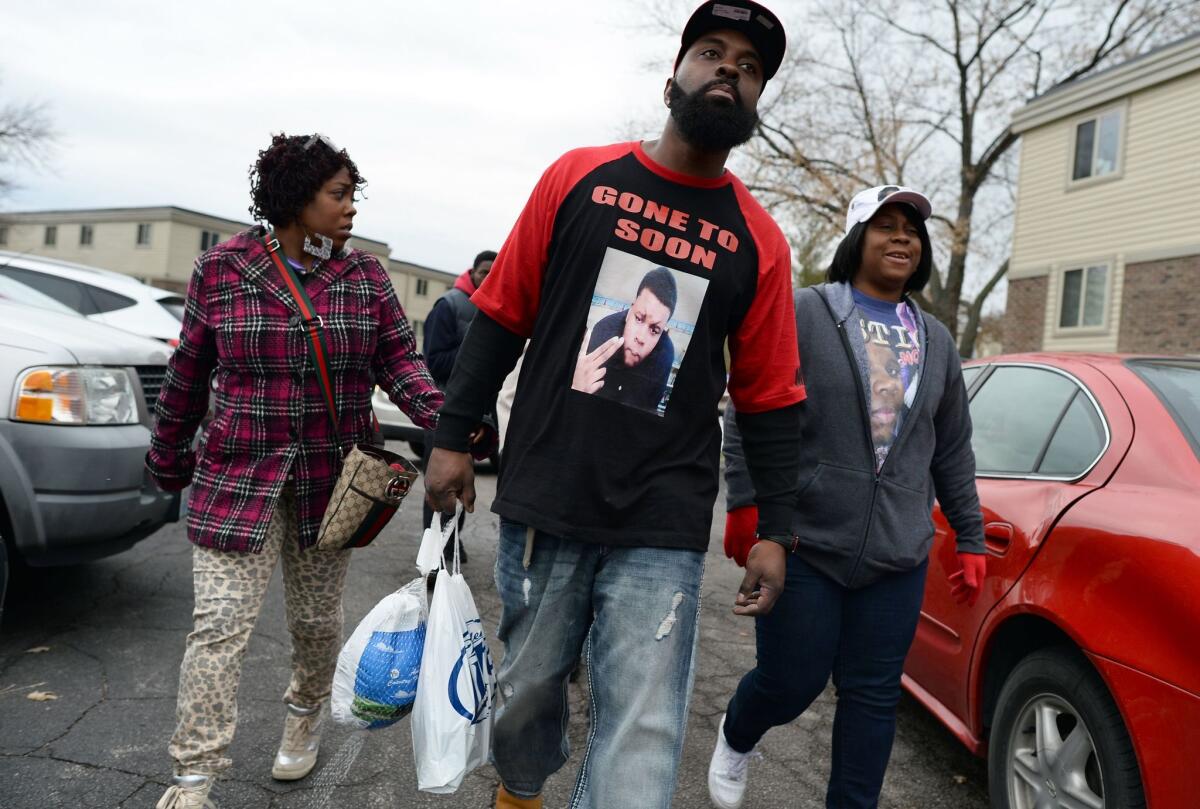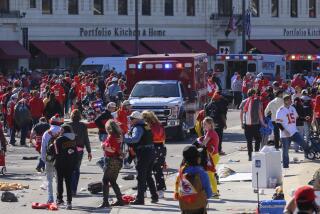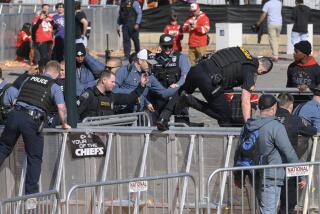Grand jury decision on Ferguson police shooting anxiously awaited

- Share via
Reporting from St. Louis — Uncertainty continued to linger over the St. Louis region Saturday as officials, activists and residents waited for a grand jury decision over whether the Ferguson, Mo. police officer who fatally shot Michael Brown will be indicted.
The grand jury investigating Officer Darren Wilson’s lethal confrontation with Brown on Aug. 9 has been in session as of Friday afternoon, according to a St. Louis County prosecutor’s spokesman who declined further comment Friday evening. He did not immediately respond to a Saturday morning query about the jury’s schedule.
At least one area school district has canceled classes Monday and Tuesday, giving students a whole week for Thanksgiving break, in anticipation of a possible weekend announcement.
Local clergy and government officials at every level of government, including President Obama and Atty. Gen. Eric Holder, have called for calm. Additionally, on Saturday, Missouri Gov. Jay Nixon said mental health services provided by a coalition of public and private advocates would be available for Ferguson residents struggling with events. Mental health professionals are expected to be stationed at churches throughout the area.
“As we continue to address the many challenges raised by events in Ferguson, it’s important to note that the past several months have taken an emotional toll as well,” Nixon said in a statement. “That is why we took action, working with local providers and advocates, to help meet the mental and emotional needs of people in the region.”
Largely peaceful protests continued in Ferguson on Friday night, with dozens of demonstrators temporarily blocking the street outside the Ferguson Police Department and West Florissant Avenue as rain moved through the area.
Police warned demonstrators not to block the roadways and said they arrested three demonstrators on suspicion of unlawful assembly: Kenny Thomas, 55, of St. Louis; David Rodriguez, 26, of Oak Lawn, Ill.; and William Morales, 23, of Granite City, Ill.
The grand jury proceedings, which began soon after the shooting, have been secret. But the group heard testimony from Wilson and received at least two autopsies of Brown. There was an official autopsy and the one carried out by Dr. Michael Baden, the former medical examiner in New York City, who was retained by the family.
The grand jury was likely asked to consider a number of questions that have swirled around the incident.
What was Wilson doing when he stopped Brown and a friend on a public street? Did Wilson intentionally kill Brown or was he negligent? Did Wilson use excessive force in firing at least six times to subdue Brown? How far away was Wilson when he fired the fatal shot? Were Brown’s hands up or down? Did Wilson fire out of fear for his life or that Brown would commit violence against others?
The most serious charge Wilson could face is second-degree murder, which includes the idea of “knowingly causing” death; it is punishable by a prison term of 10 to 30 years. Next is voluntary manslaughter, which means causing a death under the influence of some sort of passion; it carries a penalty of five to 15 years.
There are two involuntary manslaughter charges possible: First-degree involuntary manslaughter involves recklessly causing a death; second-degree is based on criminal negligence in the death.
The jurors will also have to weigh whether the police officer acted within the rules for law enforcement officers that allow for the use of violence when there is a reasonable belief the suspect will inflict serious harm or if the officer reasonably believes force is needed to prevent death or serious injury.
Follow @mattpearce on Twitter for national news
More to Read
Sign up for Essential California
The most important California stories and recommendations in your inbox every morning.
You may occasionally receive promotional content from the Los Angeles Times.











